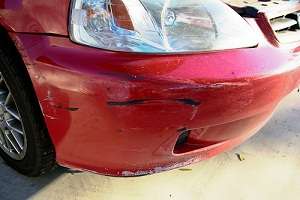Forensic analysis of car paint

The use of statistical techniques to interpret chemical information has played a key role in developing a more discriminating model for the forensic analysis of car paint.
A study by Curtin University's Department of Chemistry, in conjunction with the ChemCentre, applied infrared spectroscopy on the primer surfacer of 75 vehicles using the Australian Synchroton.
Study co-author Professor Simon Lewis says the approach could help improve hit-and-run type investigations.
For example Prof Lewis says there are chemical differences in the primer surfacer between South Korean and Australian-made Holden vehicles and, within Australia, also in the year they were manufactured.
"If you look at Mitsubishi, there are actually two groupings where you can tell which vehicles are made at the Nagoya plant as opposed to the Mizushima plant," he says.
"What that hints at is the manufacturer might be sourcing primer surfacer separately for these two factories.
"From a forensic point of view, you can see how useful that might be—if you have a sample of primer surfacer from a hit-and-run you can analyse it using this model and be able to say 'We're looking for a Mitsubishi and it's probably one manufactured at the Nagoya plant'."
Prof Lewis says the Synchroton allowed them to collect data much faster on samples as small as three microns across.
"The infrared beam line that gives you light is hundreds of thousands times brighter than the source in a laboratory which gives you a 20 to 40-fold improvement in the signal," he says.
Using a mathematical technique known as a fourier transform to interpret the signals, researchers created a model using more spectra than in the past.
"What people have typically done is used a small number of vehicles, about 10 to 15, taking many samples from those vehicles," Prof Lewis says.
"That allows you to build a model but the issue is that because you've got such a small selection of vehicles you can't really derive much useful information.
"We also know the vehicle identification number for each vehicle, which means you can find out when and where it was built—not just the country but sometimes the physical plant.
"We've collected spectrum from a lot of vehicles and absolutely know where they come from so, binding that information together, allows us to build a model which can then be used for prediction.
By taking a more mathematical approach to interpreting data, Prof Lewis says, a higher level of certainty is provided and the reliability of analysis can help provide valid forensic opinions.
Provided by Science Network WA



















